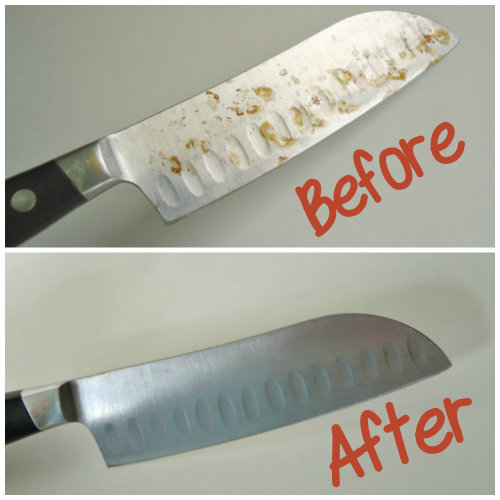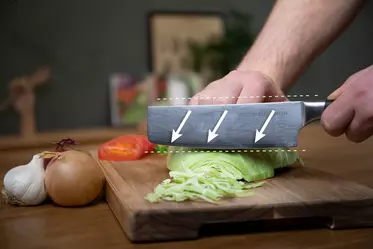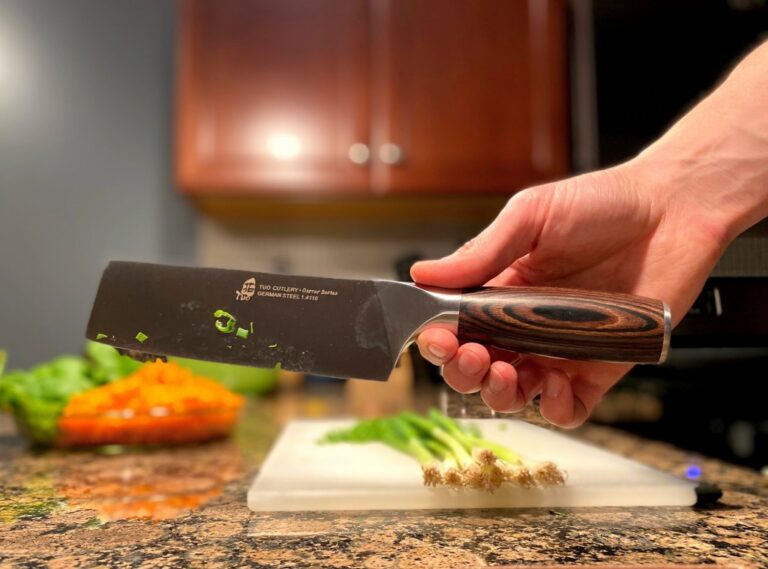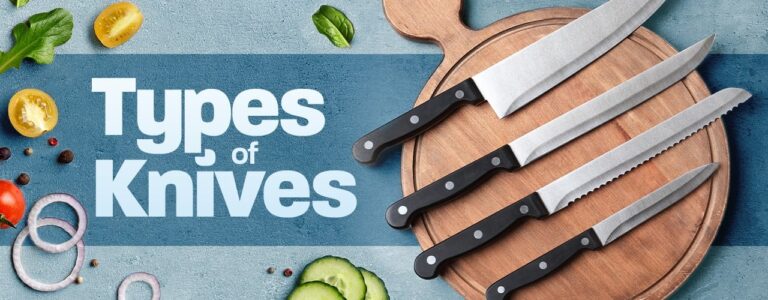What is a Santoku Knife Used For?
A Santoku knife is a versatile and essential tool in the kitchen, originating from Japan. It has a unique design and multi-purpose functionality. This knife is a favorite among both professional chefs and home cooks worldwide.
This article explores what a Santoku knife is and how to use it effectively. We will delve into the best practices for utilizing a Santoku, including its applications in meat, seafood, and vegetable preparation. We will also address the essential techniques to maximize its potential in your culinary endeavors.
What is a Santoku Knife
Santoku translates to “three virtues” or “three uses” in Japanese. It excels in three key kitchen tasks: slicing, dicing, and chopping. It features a relatively short, typically 5-7 inch, wide blade with a flat edge and a balanced, ergonomic handle. Unlike traditional Western chef’s knives, it lacks a pointed tip and instead features a curved belly for precision cutting.
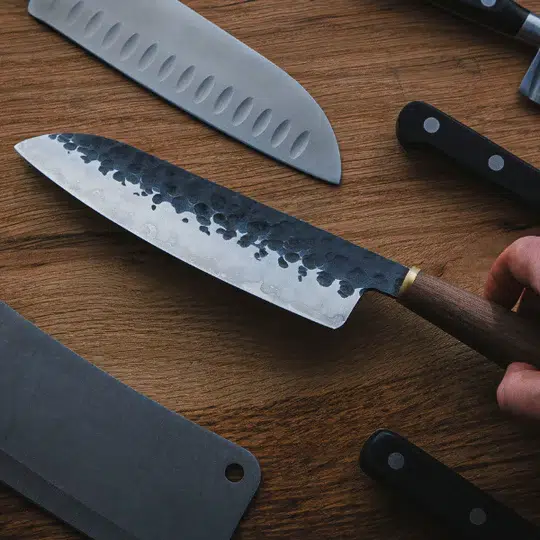
How to Use the Santoku Knife
Using a Santoku knife effectively can enhance your culinary experience in the kitchen. Here’s how to use a Santoku knife:
- These knives are best for mincing boneless raw meat and poultry. Hold the meat in place with your non-dominant hand. Then use a rocking motion with the knife to create finely minced meat.
- They are excellent for making cubes or thin slices of meat for stir-fries, stews, and other meat-based preparations. The sharp blade allows for precision slicing.
- You can also use a Santoku knife to slice cooked meats and poultry. Its sharpness ensures clean and even slices.
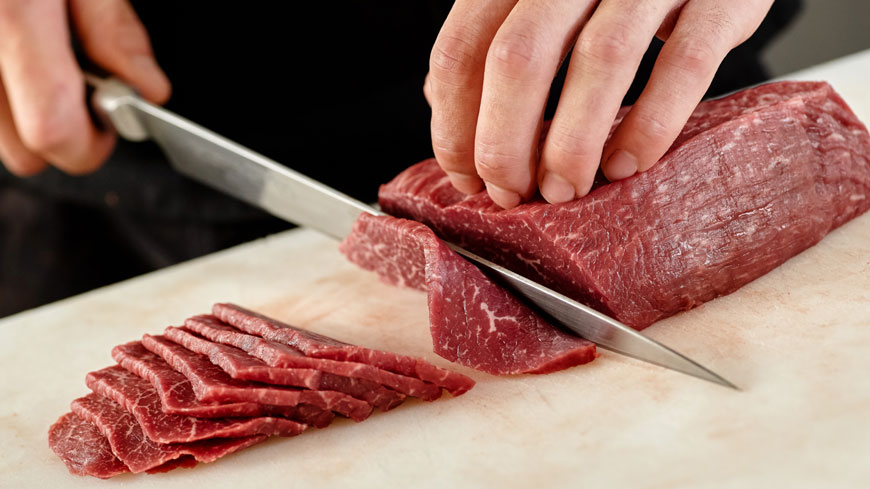
- The sharp edge of a Santoku knife is ideal for portioning and filleting fish. It allows you to make precise cuts to separate fish fillets from the bone.
- They are effective for mincing seafood like shrimp, making them versatile for various seafood dishes.
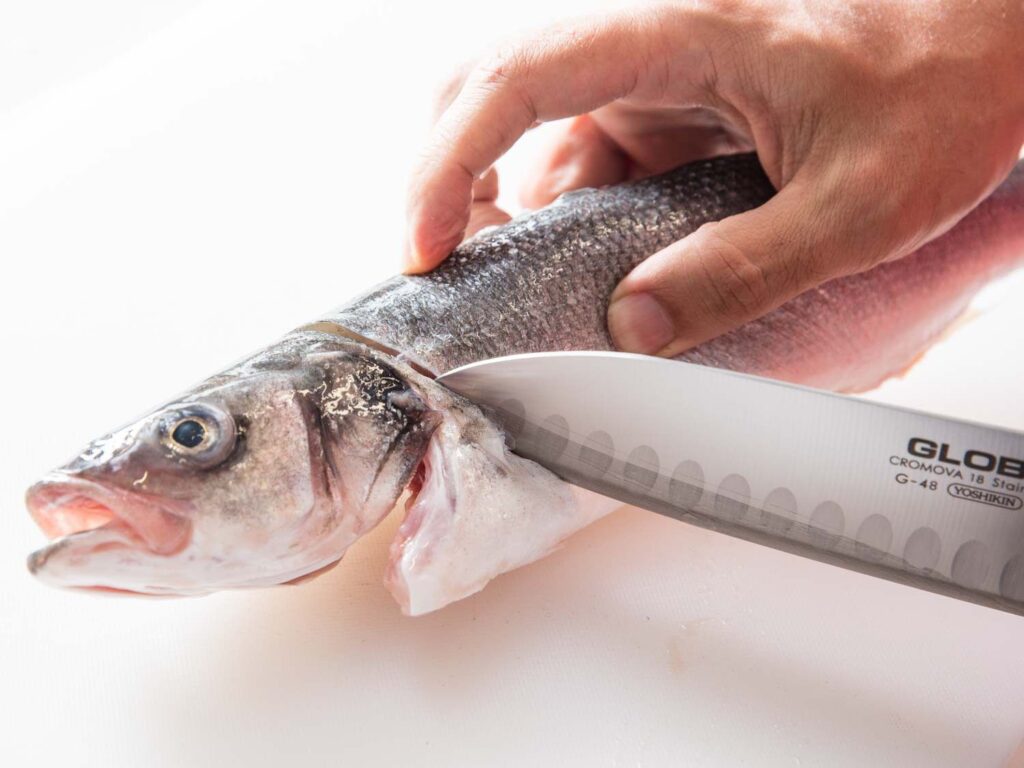
- Santoku knives excel at prepping vegetables. They can handle almost all cutting tasks in a home kitchen, making them versatile tools. Use a rocking motion to chop, dice, and slice vegetables efficiently.
- They are great for slicing vegetables into thin, uniform pieces, whether it’s for salads, stir-fries, or garnishes.

- The sharp blade is ideal for chopping herbs finely and evenly.

Caring for a Santoku Knife
- Caring for a Santoku knife, or any high-quality kitchen knife, is essential to maintain its sharpness, durability, and overall performance. Here are some tips on how to care for your Santoku knife:
- Always hand wash your Santoku knife with mild dish soap and warm water immediately after use. Avoid using abrasive scrubbers or scouring pads, as they can damage the blade and handle.
- After washing, dry the knife with a clean towel or paper towel. Ensure that no moisture is left on the blade or handle, as water can lead to rust and corrosion, especially on carbon steel knives.
- Use soft cutting surfaces like wooden cutting boards or soft plastic boards to minimize the impact on the knife’s edge. Avoid cutting on hard surfaces like glass, granite, or ceramic, as they can quickly dull the blade.
- Use proper cutting techniques to avoid twisting or prying with the knife. Instead, use a smooth slicing or rocking motion for cutting, chopping, and mincing.
- Store your Santoku knife in a knife block, magnetic strip, or blade guard to protect both the blade and yourself. Avoid storing it loosely in a drawer with other utensils, as it can lead to blade damage and accidents.
- Regularly use a honing rod or honing steel to realign the knife’s edge. Honing does not sharpen the knife but helps maintain its sharpness by straightening the edge. Do this before each use or as needed.
- When your Santoku knife starts to feel dull despite honing, it’s time to sharpen it. You can use a whetstone, a sharpening system, or have it professionally sharpened. Follow the manufacturer’s guidelines or seek guidance from a professional if you’re unsure about sharpening.
- If your Santoku knife is made of carbon steel, be extra cautious about keeping it dry and clean, as it is more prone to rust and discoloration. Stain-resistant stainless steel knives are more forgiving but still require proper care.
- Santoku knives are designed for slicing, dicing, and chopping fruits, vegetables, and boneless proteins. Avoid using them for tasks like cutting through bones, hard shells, or frozen foods, as this can damage the blade.
- Make knife care a routine part of your kitchen activities. Regular maintenance will ensure that your Santoku knife remains sharp and safe to use for a long time.

What to Look for When Buying a Santoku Knife
When looking to buy a Santoku knife, there are several important factors to consider:
- Blade Angle: Traditional Japanese knives may be labeled as right-handed or left-handed based on the blade angle, but Santoku knives are typically designed with a balanced 50/50 or 70/30 blade angle. If you’re right-handed, either of these options will work for you. Left-handed individuals may want to choose a 50/50 blade or consider a special order for a left-handed profile.
- Blade Length: Santoku knives typically have six to seven inches long blades. Choose a length that feels comfortable and allows you to easily control the knife, enabling you to cut ingredients in a single stroke.
- Weight: Japanese knives are generally lighter than German or French counterparts. The weight preference depends on personal choice. Some knives are exceptionally light, like the Takamura, Takeda, and Shibata lines. Most knives fall into the medium-weight category, such as the Sakai Takayuki and Chubo Inox lines. For those who prefer heftier knives for cutting denser ingredients, options from Kazan and Glestain are available.
- Steel Types and Hardness: Consider whether you prefer stain-resistant or high-carbon steel. Carbon steel knives can become extremely sharp and hold their edge well but require careful cleaning and drying, especially after cutting acidic ingredients. Stainless steel Japanese knives generally maintain sharpness longer. The choice of steel also involves factors like blade strength and ease of sharpening. Hardness is measured on the Rockwell scale (HRC), with higher ratings indicating greater hardness. Beginners may opt for knives with lower HRC ratings.
- Handle: Japanese knives come with two main handle options. Western-style handles are ergonomic, full-tang handles attached to the blade with rivets, similar to Western knives. Japanese-style handles are typically made of wood, with options like round, D-shaped, or octagonal, and are attached with a ferrule usually crafted from horn. Wood choices include magnolia, ebony, rosewood, and walnut. Handle preference is mostly a matter of personal comfort and grip stability.
- Price: Santoku knives are available in a wide price range. Introductory-level options like Chubo Inox or Tojiro offer good value with attention to detail. Higher prices are associated with knives featuring advanced technology steels and premium handle materials, such as the Takamura and Makoto Kurosaki lines. Hand-forged knives from master blacksmiths or artisanal knifemakers come with higher prices due to the quality of materials, craftsmanship, and time invested in their production. Knives from makers like Takeda, Saji Takeshi, and Kagekiyo are considered heirloom-quality and are priced accordingly, meant to last a lifetime.
Conclusion
In conclusion, the Santoku knife, with its unique design and versatile capabilities, establishes itself as a must-have tool in the kitchen. Chefs and home cooks alike favor it for its proficiency in slicing, dicing, and chopping, along with its ergonomic handle.
Whether you’re tackling meats, seafood, or a bounty of vegetables, the Santoku knife’s precision and ease of use elevate your culinary skills. With proper care and maintenance, you can rely on this Japanese wonder as a companion that enhances your cooking experience with its sharpness and efficiency. The Santoku knife undoubtedly earns its place as a fundamental and invaluable asset in any kitchen.

